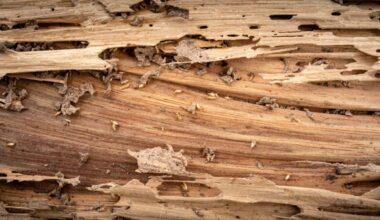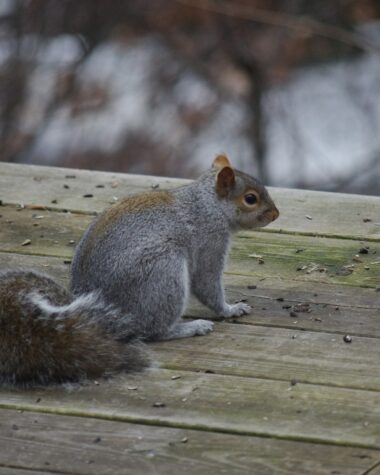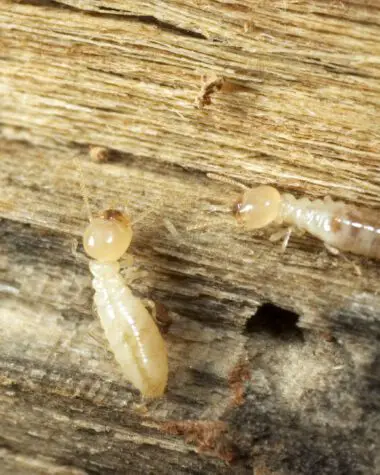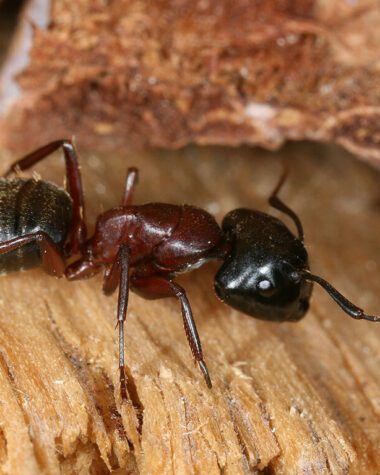Identifying wood-destroying insects is essential to find effective pest control. It is very critical to monitor warning signs and apply preventive measures before wood-damaging insects infest your property and cause serious damage.
According to Pest Damage Statistics, approximately 600,000 homes in the US are infected and damaged by pests each year, costing more than $5 billion annually in treatment and control. So it is important to ensure that your wood structures and property are not prone to infestation-related problems.
To help you avoid wood-destroying insects, here’s a quick tip when looking for early infestation signs and identifying which wood pests invade your property. You can also use some easy-to-follow guides and helpful treatments against these insects.
Most Common Wood-destroying Insects
Most wood-destroying insects conceal in the damaged area they create. They hide inside the wood by creating interior tunnels and holes. If you suspect a possible insect infestation, these signs can help you identify them and respond effectively to eliminate pests.
Carpenter Ants
Carpenter ants are commonly found in humid areas with moist and decaying wood. Unlike other pests, carpenter ants do not eat wood but excavate tunnels where their colonies live and reproduce.
The signs of carpenter ants in your area are piles of wood particles and powdery sawdust that appear near an infested wood. In some instances, you may also hear muffled, rustling sounds in walls or other wooden structures.
The first warning signs of carpenter ant infestation are trails of large, dark ants leading into your property. If there are few ants indoors, it may indicate that the pests came from an outdoor nest. But if there are larger numbers inside, it signals greater trouble.
Solution: To eliminate carpenter ants, the best way is to follow the ant trails and try to find their nesting spot. You should focus on any damp areas with large, dark ants nearby. After spotting the nest, you can physically remove it with a vacuum cleaner or use chemical treatment with baits or sprays.
To avoid reinfestation, you should also clear any moisture problem in your area. Make sure the airflow is fine, there are no leaks, and your wooden structure and furniture are not exposed to water and moisture.
Related Post: Do Ants Eat Wood?
Carpenter Bees
Carpenter bees target homes and wooden structures and cause damage that can be severe over time. They excavate nesting tunnels inside the wood and create entry holes, often the size of a fingertip and round in shape. This repetitive nesting over time can lead to extensive damage.
Carpenter bees usually attack bare, unpainted wood. The signs of these pests you need to watch out for are piles of coarse sawdust that can be found below the entry holes. Areas below these holes are usually stained with dark colors, which are the fecal waste of the bees. You may also hear rumbling and burrowing sounds within the wood.
Solution: The best treatment against carpenter bees is applying dust insecticides in their tunnel. This treatment remains active for long periods and can eliminate multiple generations of bees that attempt repeated nesting.
After cleaning the tunnels, you can seal the entry holes to avoid the reinfestation of carpenter bees. You can also use traps to reduce their number. However, these traps can catch several other insects that may be considered beneficial.
Termites
Termites are considered the most destructive pests to wood structures and furniture. They eat the wood they infest and usually live in soil or wooden structure that is in direct contact with the ground. The worst thing about termites is they can go undiscovered until severe damage has been done.
But there are still early signs that may indicate a termite infestation. Near a possibly infested wood, you may see piles of wings that termites often leave behind. You can also notice muddy, tubular passageways along walls or other wooden structures. Termites pass through these tunnels to get food or roam along the infested wood.
Another way to identify the presence of termites is when you knock on your wood, and it sounds hollow and empty. When you try to probe the area with a screwdriver, you may notice that the exterior is fragile and reveals termite colonies.
Unlike carpenter ant galleries, termite colonies are often lined with soil and grayish-brown excrement. Also, termites don’t usually leave powdery sawdust, only remnants of infested wood.
Solution: Termites are usually heat-sensitive, so heat can be an effective termite repellent and an easy homemade remedy. You can heat an infested space to at least 120 degrees Fahrenheit or bring your infested wood under the sun. This can be a cost-effective way to natural termite control without using chemical pesticides.
If you want to permanently and more effectively eliminate these pests, you can apply chemical insecticides to your area. Or you can put essential oils and boric acid around the infested wooden structures and furniture. Also, you can set up termite baits to reduce the number of termites and slowly kill the colony.
Related Post: Help Is Here: Why Termites Eat Wood And How To Stop It
Wood-Boring Beetles
Wood-boring beetles come in second to termites with their destructiveness to wooden projects. One of the most common wood-destroying beetles is the powderpost beetle which attacks both soft and hardwoods, such as lumber materials.
Powderpost beetles are black in color and grow to about one-eighth of an inch long. They can even dig through painted and varnished wood, where they create tunnels and shelters for their larvae. Although they infest the wood for a short time, these beetles can cause significant damage as they consume the wood’s nutrients.
You can discover a beetle infestation once you notice powder dust near small, round holes in the wood surface. You can even notice that your wood may appear to be turning to dust or decaying, a common sign of powderpost beetle invasion. Also, you should be alert for the presence of tiny fecal waste near areas such as window sills, wooden porches, and furniture.
Solution: Wood-destroying beetles are most destructive during their larval stage, so you should eliminate their larvae first. Since the larvae are located deep inside the wood, a standard insecticide may not work against them.
There are borate treatments that you can try for some relief. But in most cases, professional treatment is required to control these beetles. It can include heat treatments or chemical fumigation that penetrate deep inside the wood to kill the larvae.
Related Post: How to Get Rid of Wood Borers (Step-by-Step Guide)
Conclusion
One of the greatest threats to your home can come in the form of small pests. These wood-destroying insects can launch silent attacks on the wood in a short period of time, or extensive damage once left untreated for years.
If an infestation occurs once, it’s more likely to happen again if your area has certain conditions that attract these pests. So the best prevention is ensuring that your property has no leaks or moisture problems.
Frequent monitoring of your woodwork can also be necessary when inspecting for an infestation. Once you spot the early signs of wood-destroying insects, you can apply the most effective solutions against them.
Check more detailed guides and tips about understanding and handling a wood infestation through available resources online. You can learn about the causes of wood infestation, treatment, and even restoration! There are also easy-to-follow DIY guides about reclaimed wood projects for you.








